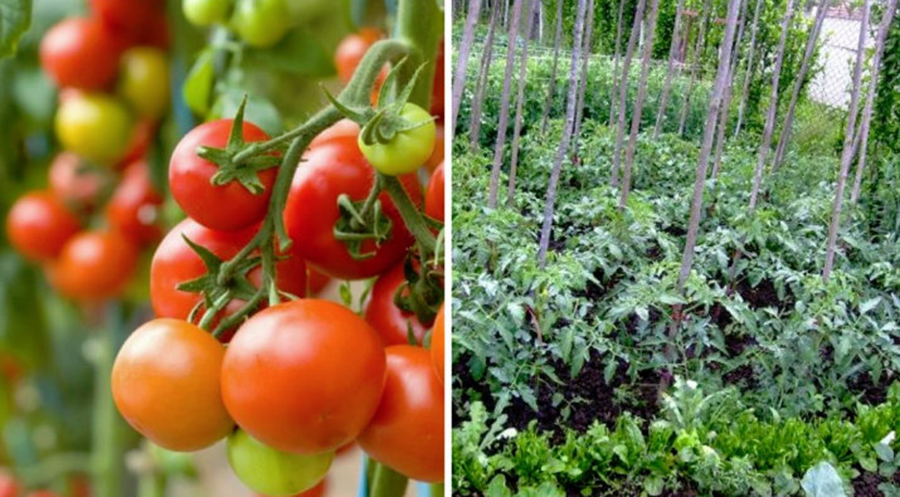They are delicate, fragile, and special fruits and require special care to flourish. Tomatoes can be of several varieties, but are grouped into two main classes:
Determinate varieties, also called bush tomatoes, which can grow up to 3 or 4 feet in height
Indeterminate varieties, which can grow up to 12 feet in height, since they keep growing until they are killed by frost.
Here are some useful; tips that will help you grow healthy and delicious tomatoes in your garden:
Nutrients
Plant the tomato seedlings in pots, and poke holes underneath to prevent water stagnation.
In order to make them flourish and ripen, you should ensure they receive at least 8 hours of direct sunlight daily. Moreover, water the tomato seedlings twice a day, in the morning and in the evening.
They are ready to graduate to soil beds after about a month. Dig large holes to accommodate the seedling and its additives, of about 20-24 inches (50-60cm). It would be best if they are spaced out by at least three feet (0.9m).
Fish heads for nitrogen
Fish heads are rich in nitrogen, which is released as they decompose. A lack of nitrogen is the cause for the unhealthy look of the tomatoes, so make sure you satisfy them with organic nitrogen sources, like fish heads, fishtails, fish guts, fish waste, and all kinds of seafood waste.
Place the fish head into the hole, with the open end in contact with the soil.
Aspirin to boost their immune system
You should also drop a few aspirin tablets in the hole as well, as the acetylsalicylic acid triggers a defense mechanism in the plant, known as the Systemic Acquired Resistance Response. In this way, the tomato will fight off antigens like bacteria, fungi, and viruses.
Willow water is another natural source of salicylic acid, and it is made from the bark of the willow tree. Cut the fresh bark into 1-inch strips, place them in a jar, and pour hot water over them.
After a few days, the color will be completely stripped from the bark, and you can store your willow water in the refrigerator. Before planting, you should soak the cutting in the willow water for 24 hours.
Eggshells for calcium
Low calcium levels lead to blossom end rot, a common disease that affects tomatoes, squash, peppers, and eggplant. Therefore, crush 3-4 eggshells, and pour them into the hole, to provide enough calcium and protect the blossom ends.
Bone meal for phosphorus
A phosphorus deficiency might be the reason why your tomato plants grow slowly. A bone meal from any animal is a rich source of it. Therefore, scoop a handful into the hole.
Planting
In the end, add 2 spoonfuls of an organic NPK fertilizer, high in nitrogen, phosphorus and potassium nutrients, in a 4-6-3 ratio.
Then, trim the lower leaves on the stem, and cover the hole with the first layer of soil. Then, add the seedling, but make sure the leaves are above the soil level. Spray the plant with a mycorrhizal fungi product before you extract it from the pot, to prevent diseases and boost the absorption of water and absorption.
Place the plant into the hole, fill with soil, and gently push.
Make a small well around the base of its stem before the first watering, in order to help it preserve the water longer. Water the tomatoes several times on the first day.
Make sure your tomatoes get the needed sunlight in order to thrive. Apply compost or fertilizer twice a month, and remove any weed where necessary. And then, just enjoy your fresh and delicious tomatoes from your own garden!










